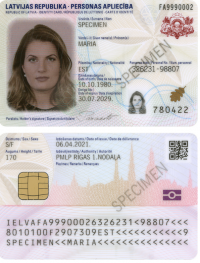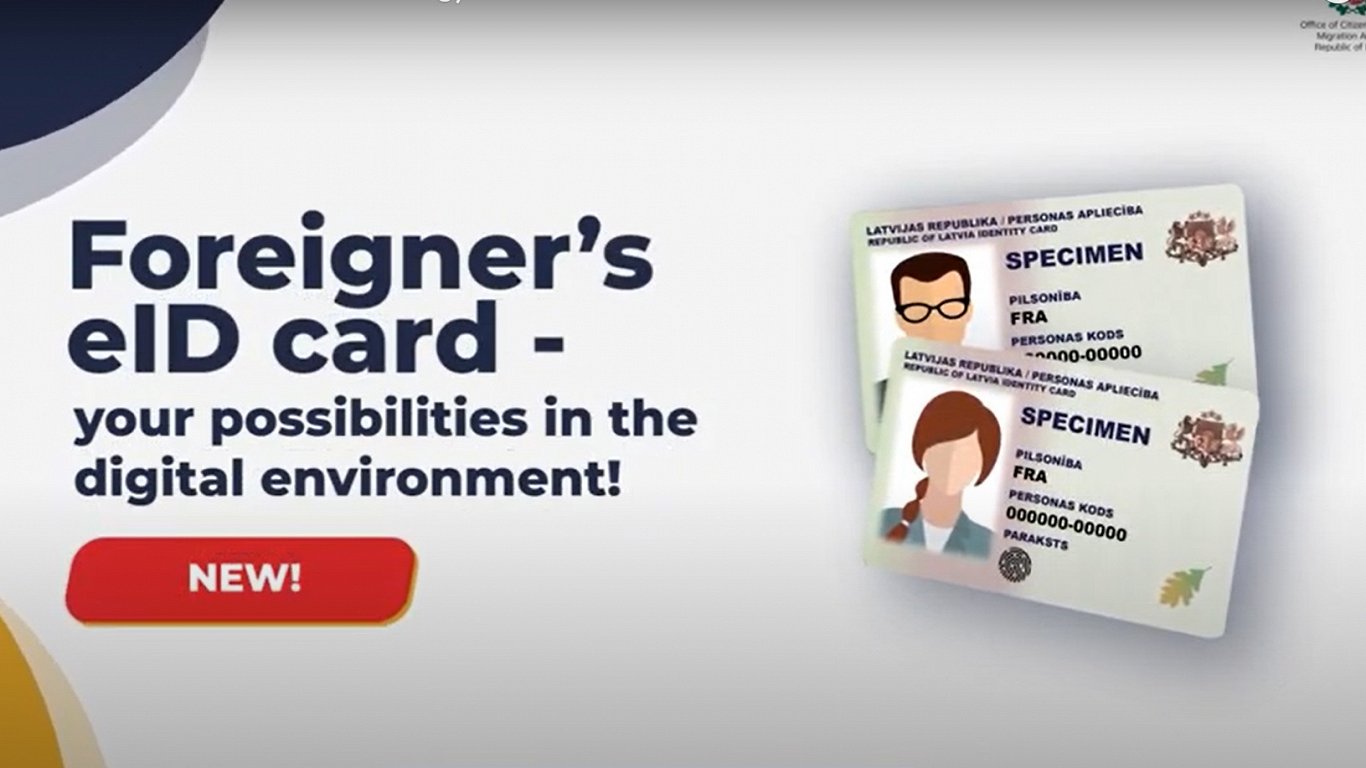Having an eID card allows holders to use e-signature services and conclude transactions without traveling to Latvia and even without applying for a residence permit, as reported by LSM at the launch of the scheme.
But according to Latvian Radio the document is desirable by a different audience and for other purposes. People from Turkey, Albania and Uzbekistan may be trying to illegally use the document to work in the European Union (EU). The authorities and border guards say they detected the situation in time and fixed the problem, but this case shows how relying on people's good faith can lead to Europe-wide trouble.
In Latvia, e-services are fairly well developed, and ahead of many other European countries. A wide range of state services is available to the public in the electronic environment, and accessing them is also relatively easy. An e-signature can be obtained by every citizen of the country who receives a personal identification or ID card. It also ensures identification of a person in the electronic environment, similar to online banking tools.
The e-signature systems are maintained by a state company – the state joint-stock company "Latvian state Radio and Television Center" (LVRTC). They have all the information about who is using e-signatures, where and how much.
"So in Latvia, e-signature tools are the only ones that have this legal status, that they are comparable to presenting a [signed] personal document in person. Other authentication tools do not have this status. And what we see is that this proof of identity is really growing very rapidly, this year there are already 7.5 million times when people have used e-signature tools, be it e-Signature mobile or e-ID card for proof of identity," said Vineta Sprugaine, Head of Corporate Communication at LVRTC.
Sprugaine said five million documents have been digitally signed this year. The geography from where the user is connected is also very wide.
"According to the data of the last 30 days – Latvia, Sweden, Great Britain, Germany, Lithuania, Norway, the Netherlands, Estonia, Spain, Finland are the top ten. These are the countries from which people signed up to the portal "e-paraksts.lv," said the representative of LVRTC .
Suspiciously growing demand
Not only citizens of Latvia have the right to use an e-signature. It can be obtained both by persons with temporary residence permits and citizens of EU and European Economic Area countries staying in Latvia. The prerequisite is that the person must be registered in the Register of Natural Persons of Latvia. The register and issuing of the document is under the control of the PMLP, which in turn is under the Ministry of the Interior.
Until the fall of 2021, there were limited opportunities to obtain electronic identification cards and e-signatures for foreigners who do not stay permanently in Latvia. They had to travel to Latvia to establish companies or buy property. To eliminate this shortcoming, PMLP decided to create a special identification card for foreigners.
"It was not possible to get an electronic signature, except for a foreigners who had a temporary residence permit here. Others also took a temporary residence permit for this reason, even though it was clear that their aim was not to live here. They still had a residence permit, but lived elsewhere and entered [Latvia] maybe once a year, but they needed this card," explained PMLP head Maira Roze.
She said that such a card is also useful for asylum seekers who stay here for more than three months.
The regulations of the Cabinet of Ministers on the new document entered into force on October 16 last year. Initially, demand was not high. However, the situation changed in the summer.
"Then suspicions arose, and also the fact that more demand appeared. Then we realized that this demand has suddenly appeared very quickly," said Roze.
During the summer, PMLP officers observed coordinated groups of foreigners who had arrived specifically to obtain this document. These people spoke neither Latvian nor English, but they wanted to get access to use Latvian e-services and sign documents, said Roze. "Citizens of Turkey, Uzbekistan, Azerbaijan, Albania, those were mostly the ones that worried us, that made us want to change something."
Signals that foreigners are trying to use the document as an identity card for travel also came from the border guard.
"The border guard [said] that some people show such a card when driving out of Latvia, with the idea that it also gives them the right to stay," said the PMLP chief.
Other countries confused
Another problem is that many other countries remain uninformed about the intricacies of Latvia's various different types of identity documents and the legal force each of them has. In many other EU countries, similar-looking cards are used as actual identity documents certifying that the holder is a citizen of the issuing state. Obviously with Latvia's foreigner-specific eID cards, that is not the case.
"Yes, we had more signals from the border guard that there was a bit of a misunderstanding. Even now, for example, the Germans here asked us to tell them exactly what it is, because they have seen something there," Roze added.
The confusion with the electronic identification card for foreigners arose because the plastic card with a personal photo, personal code and issuing data looks almost identical to an actual ID card of a Latvian citizen. The most noticeable differences are the absence of a tiny transparent section, a slightly different layout of information, and that the citizenship of another country is indicated if you look closely.

Perhaps unsurprisingly, the inscription in three languages "Republic of Latvia, personal identity card" is open to misinterpretation. Only someone very well informed or making a careful comparison between a regular Latvian eID card and a foreigner eID card is likely to notice the differences.
An identity card of a citizen of Latvia can be used as a travel document within the European Union, countries of the European Economic Area and the Swiss Confederation. A foreigner-issued eID card cannot.
"If he [the policeman] sees that it is not a citizen of Latvia, it means that this is not a document with which you can stay in another country," explained the head of the PMLP.
Roze suspects that the citizens of third countries wanted this document in order to possibly use it illegally in the labor market of European countries, where it is forbidden for them to earn money without a special permit. If border officials might have trouble understanding the differences within Latvia's eID card system, it is hardly suprising that employers may be even less informed.
"They are shown some kind of document and they thinks "Oh, very good". But when there will be these further actions after that, with all kinds of other institutions, then that information will start to appear," Roze said.
Changing the design
Realizing that the document is increasingly being requested for other purposes, PMLP changed the design of the card. Now, on the other side of the document, the words "This document is not a residence permit" and "This document is not valid for travel" are written in large letters in Latvian and English.
The government adopted the amendments to the regulations at the end of October. However, Minister of the Interior Kristaps Eklons (Development/Par!) believes that the officials who prepared the original document cannot be blamed for carelessness, or that they couldn't have foreseen that the design of the card could be a cause for confusion.
"You try to help people as much as you can, and you don't always think about all aspects, about misuse. Well, this would probably be the case – it's a nice-looking document, and it is different, but not so much that a careless observer might miss it.
Bad characters started abusing it. I believe it is a technical problem. It was not fully predicted how it could be used like this," the minister said.
"The visual image has been changed and information has been sent to all EU countries that it cannot be used as a travel document."
Around 1,500 identification cards for foreigners have been issued during the year. No-one can say how many of them are operating in the electronic environment as intended and how many might have been used to deceive officials in other countries about the right to stay and work in the European Union.
Meanwhile the roll-out of eID cards within Latvia continues apace, with possession of a card set to be obligatory from January 1, 2023.




























